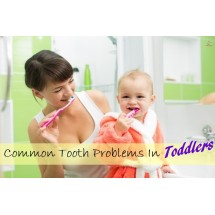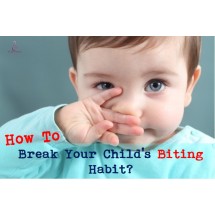
Did you mean young children suffer from tooth decay too?
Yes! Tooth decay does not only happen in adults and older children, but it can also affect young children too. In fact, tooth decay can cause a lot of uneasiness and discomfort in your child, including their speech and jaw development. What are the causes of tooth decay and how can you prevent it from happening/worsening? Dr Lim Swee Teck provides insight into tooth decay in young children.
1. What happens when a child has tooth decay?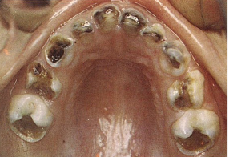
It means that the tooth has broken down structurally and a cavity has formed. This allows food to get stuck in between the teeth, causing the affected tooth to become sensitive to cold and hot food and beverages. As the hole enlarges, the nerve will get affected too, leading to subsequent pain or toothache.
2. What are the causes of tooth decay in kids?
Improper home care supervision of the child and inadequate tooth-brushing are some of the common causes of tooth decay. If a child is allowed to have frequent in-between snacks and sugary drinks as and when he likes, the teeth are subjected to frequent food 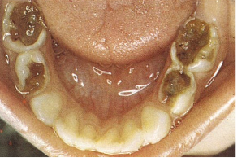 accumulation and acid attack, which could eventually lead to tooth decay.
accumulation and acid attack, which could eventually lead to tooth decay.
3. What are some early signs of tooth decay that parents should look out for?
If you start to notice dark or brownish looking spots that appear on the chewing surfaces of the teeth, especially on the grooves of the back teeth, it might be the indication of tooth decay. Tooth decay can also occur in-between or on the contact areas of the teeth. If there are dark spots that cannot be brushed away, consult the dentist immediately.
4. How can tooth decay affect children?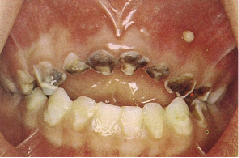
Tooth decay can affect children in a couple of ways. If the tooth hurts as a result of the cavity or the infection of the nerve, the child will not be unable to feed properly as it may hurt whenever he or she apply pressure while chewing the food. The tooth can also hurt at night, as pressure and irritation of the nerve occurs when the child lies down.
As the discomfort increases, the child becomes moody and may refuse to eat. For older children, they may not be able to concentrate on their studies and even refuse to play. It can become worse if not properly treated.
5. Are there any difficulties children face with tooth decay?
As tooth decay causes sensitivity and subsequent pain, the child may be unable to carry on with his normal activities. However, tooth decay can worsen if left untreated. It may infect the nerve, leading to the formation of abscesses which can be extremely painful.
Dental treatment will be necessary to treat the tooth decay. Due to the extensiveness of the treatment, it may not be a pleasant experience, causing the child to develop subsequent fears for the dentist and dental treatment. Do not allow this to happen to the child!
6. Are there different stages of early childhood tooth decay?
Early Childhood Tooth Decay or ECC can occur on baby teeth of children as early as 2 to 3 years of age. It is caused when the tooth surfaces and gums are not properly cleaned after a feed (breast milk or formula). Such decay first appears as whitish spots or patches on the teeth or as whitish bands near the gums at the necks of teeth. Later, they will turn brownish and the tooth starts chipping off as the tooth structure breaks down. Then the tooth finally and rapidly chips away as the tooth structure crumbles.
7. From your experience, what is the worst case of early childhood tooth decay you’ve seen?
A 3 year-old was brought in to see me as she was in pain and unable to eat. The child has been bottle-fed on a daily basis. The child will not sleep unless given a milk bottle as a comforter. Parents do not know about the importance of after-feed care.
After examining, we found that almost every tooth in the child’s mouth are decayed and some with abscesses. The child was crying in pain. The only way that we could help was to get her treated under General Anaesthesia. It was definitely a traumatic experience for her!
After the treatment, the child and parents were taught how to properly maintain and care for the teeth and gum.
8. How can early Childhood Tooth Decay be prevented?
As recommended by the Ministry of Health, an infant should get their teeth checked by the dentist at about 1 year of age. The purpose of the visit is to ensure that parents are providing proper and adequate home care for the erupting teeth and gums especially after each feed.
Parents are also advised on proper oral health care and what to do after a feed. These measures will prevent the accumulation of food on the teeth and subsequently, stop acid formation and early childhood tooth decay.
When the child is about 3 to 4 year-old, they are recommended to visit the dentist for routine care.
9. For parents with kids who are suffering from tooth decay, what are some suggested solutions?
During the visit to the dentist, parents will be informed of the findings and necessary measures needed to help stabilize the child’s oral condition and free the child from further decay. Teeth with cavities are then filled and then cleaned. Fluoride gel is applied onto the teeth as a preventive and protective measure.
Parents and the child are informed of dietary measures to be taken. Finally, proper tooth-brushing technique is also taught to both parent and child. It is recommended for the child to use toothpaste with fluoride.
10. Are there any food choices that can help prevent tooth decay?
Eating a balanced diet is important for general health and for health of the oral tissues. The biggest advantages of eating a balanced diet is that it satisfies the child’s appetite and reduces his desire for in-between sweet snacks.
When your child consumes snacks like candies, cookies and cakes or even drinks high in sugar level, it will increase the decay producing organisms, causing the tooth to get attack by the acid. If a child needs to snack, fruits, carrot or celery sticks are a better alternative.
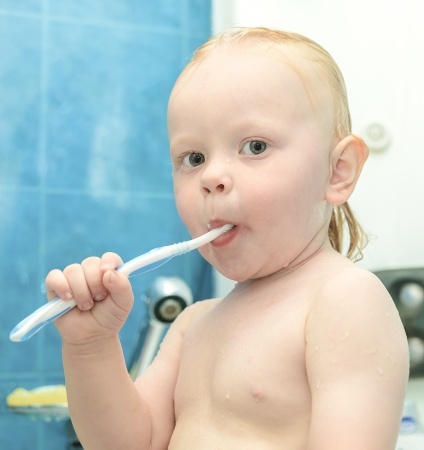
11. Please share with us the correct brushing and flossing techniques that children should practice?
Three general rules are emphasize in tooth-brushing
A. Brush immediately after eating
B. Children normally use the “scrub technique”. Brush each area at least ten times – the upper and lower chewing surfaces, the surfaces next to the cheeks and lips and then the inner surfaces next to the palate and tongue.
C. In older children, they can switch to the “paint brush or sweeping technique”. Brush the upper teeth down, towards the biting edge and in the lower teeth, up towards the biting edge.
If unsure, get your dentist to demonstrate it to you.
Parents should help their children to brush their teeth until they are 9 years of age so as to ensure that they acquired proper brushing techniques. They should also floss their teeth too. When your child reaches 14 years of age, then they should be given the autonomy to floss their teeth themselves.
Nowadays, tooth brushing is made easier with the introduction of electric tooth brushes. These brushes have all the necessary movements for cleaning the tooth incorporated in the head of the brush. All you have to do is to hold it on the tooth and gradually move it from tooth to tooth and it does its job of cleaning. It is recommended as it makes cleaning easier and better!

By Dr. Lim Swee Teck
Specialist in Pediatric Dentistry
Author of The Healthy Smile Series (12 books)
Qualifications
FAMS, BDS, MDS (Singapore)
M.Sc (Ohio, USA)
Cert. Pedodontics (Ohio, USA)


